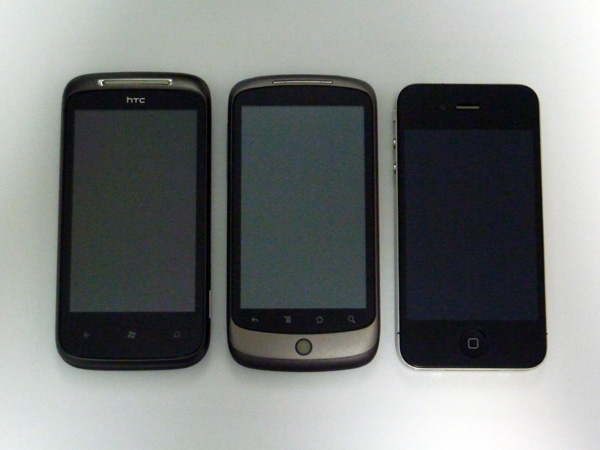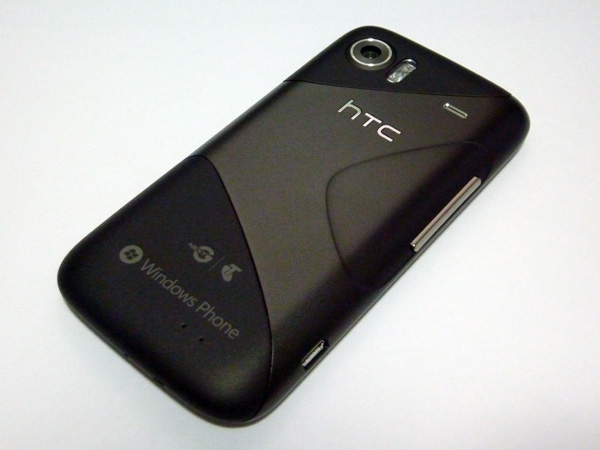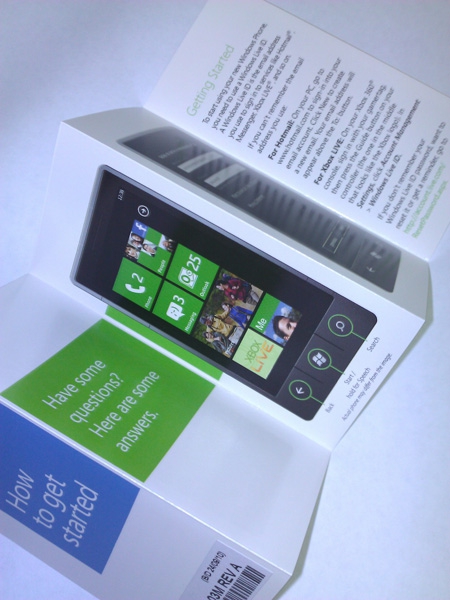|
Developer & Designer, News Editor Emeritus

Join Date: Aug 2006
Posts: 12,959
|
|
 Hands-On with the HTC 7 Mozart
Hands-On with the HTC 7 Mozart

Choice is good. No, choice is great! But in looking at HTC's Windows Phone 7 devices, you could be forgiven for thinking that the paradox of choice is entirely applicable. Specs-wise, they're almost the same. That makes decision-making inherently tough. But there are features that differentiate each from the other, and perhaps the most defining features on the HTC 7 Mozart is the 8-megapixel camera with Xenon flash and the 3.7" display, which, being the second-smallest of the bunch, makes for some pretty impressive pixel density. How does this beast look and feel in the flesh? Read on to find out!

There's a sense of satisfaction to be had when handling the Mozart box for the first time. It's clean. It's minimal. And it contains one of the first Windows Phone 7 devices available on the market. Inside the box, there's a charger, a USB to micro-USB cable, a 3.5 mm stereo headset, more documentation than you'd ever want to read, and, of course, the Mozart itself. 

Now, handling the Mozart for the first time is equally as satisfying. This device oozes beauty, and is arguably the best looking of the bunch with its unibody brushed aluminum chassis and rubberized battery/SIM cover à la Nexus One. If you divert your eyes to the shots below, here's how the Mozart (left and top) stacks up against the Nexus One (middle) and the iPhone 4 (right and bottom). As you can probably tell, size-wise, it's only just a hair thicker and taller than the Nexus One, and just a tad larger overall next to the iPhone 4. 

As for the placement of objects, there's the 8-megapixel camera with Xenon flash, speaker, and somewhat subtle branding on the rear. On the left, there's a volume rocker and micro-USB port. On the right, there's a camera button. On the top side, there's a 3.5 mm headphone jack and a power button. And on the bottom, there's a microphone. 




Now, let's bring our eyes to the front. Seated just on top of the display is a grill for the earpiece, which also happens to house LED indicators. Below the display, there are three backlit touch buttons characteristic of Windows Phone 7 devices. And then there's the display itself. It's gorgeous. Pixel density is relatively high. Blacks are blacks (not quite AMOLED-ish black, but black enough). Whites are whites. Colors simply pop. This is a display that really makes you appreciate the Metro UI. 
The auto-focus camera is, perhaps, the Mozart's most identifying feature. Its eight megapixels eclipses HTC's other Windows Phone 7 devices, and its Xenon flash is considerably bright. But while all that may sound impressive, in practice, it's anything but. In almost all sample shots taken (the shot below is a pick from the bunch), images appeared slightly dull and washed out. And the camera software is about as basic as it gets. Settings for ISO, EV, sharpness, and what not? Sorry, you won't find it on the Mozart. And the advertised 720p video recording? Yes, it works, but expect considerable frame rate reduction in low-light scenarios. Compared to, say, the iPhone 4, HTC has a lot of work to do if it's to make its camera hardware and software as compelling in practice as it seems on paper. 
I won't cover the software in great detail. The OS itself, with its pros and cons, has been covered here on Windows Phone Thoughts before. What is worth highlighting is the bundled manufacturer and carrier apps. First of all, there's the beautifully-designed HTC Hub. If you've owned an HTC Sense-equipped device before, then the Hub should feel familiar to you. It includes a clock, weather, stocks, sound and photo enhancers, notes, a converter, and a portal to games and other apps, all behind a gorgeous UI complete with spiffy animations. Moving on to carrier apps, the Telstra-branded version of the Mozart includes a FOXTEL Guide and a portal known as TelstraOne, which offers all-in-one access to BigPond services such as news, sports, movies, weather, Yellow Pages, White Pages, AFL, NRL, and much more. And rare for most carrier apps, TelstraOne is actually a marvel to look at and use. 
The Mozart is by no means perfect. HTC clearly could have given the camera more attention. More storage space beyond the included 8 GB would have been nice, too. But all things considered, there's no denying that this is one gorgeous device, and it's one that I wouldn't hesitate in recommending. Want one? Here's where it gets interesting, especially if you're US-based. Officially, the Mozart is an Australian and European release. While I can't speak for the European version, the Australian version featured in this review is sold unlocked by Telstra, is available contract-free, and operates on the 850 MHz 3G band, so if you have a knack for importing and don't mind being bitten by the near-parity AUD/USD exchange rate, go for it. Darius Wey is a designer, developer, and Microsoft MVP based in the sunny coastal city of Perth, Australia. He previously worked as a Software Engineer at IBM and served as the News Editor at Windows Phone Thoughts for many years. Today, he runs Codesparq, a business specializing in the design and development of mobile applications. 
Do you enjoy using new hardware, software and accessories, then sharing your experience with others? Then join us on the Thoughts Media Review Team! We're looking for individuals who find it fun to test new gear and give their honest opinions about the experience. It's a volunteer role with some great perks. Interested? Then click here for more information. 
|

